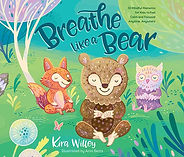Parenting is a beautiful and often incredibly challenging journey.
Mindfulness offers countless ways to resource yourself and your loved ones, navigate the ups and downs with more ease, and savor lots of joy and connection along the way.
We invite you to explore these resources below for ways to deepen your own personal practice and share mindfulness with your kids, at any age.

Mindfulness for Parents
Resources for Kiddos
These exercises are designed for younger kiddos (12 or under), but they can be enjoyed and appreciated at any age...parents included!
A few tips:
-
Establish a daily "PAUSE time" in your child's routine (like before a nap, after dinner, or just before bed).
-
Make it special and fun! Invite your child to practice with their stuffed animal or sibling(s) and let them set up their own PAUSE space in their room with a blanket, pillow, or lamp. You could even help them light a candle, if that's safe. Aim to create a routine with them that they look forward to. You could also let them choose the guided exercise that sounds most enjoyable.
-
Don't force it. If they listen to even 15 seconds of a practice, that counts! Small moments many times is the rule for adults, and it totally applies to kids, too.
-
Enjoy the practice yourself – join your child and practice on your own. Showing them that you are equally invested in the practices and that you also carve out special time in your day will inspire and motivate them to do the same.
Resources for Teens
It's hard enough to get adults to engage in these practices, let alone teens! While most teens are emotionally capable, they may not have the self-awareness/ intentionality/ motivation to make the time to explore how these tools could help.
Micro lessons, or feeding small bits of info at a time will be helpful. We've included some really great, short videos below that speak to the WHY of meditation for teens (they're actual teens voices/stories which is awesome) as well as some guided meditations specifically designed for teens.
The On-the-Go weekly practices in each core training session might also be applicable for your teen. For example – in Presence: Session 1 – you could tell your teen that your activity this week for single-tasking is X, e.g. washing your hands (make it small and simple), and invite them to try it out....paying full attention to the experience, and then you could share your experiences with each other. What did you notice? Another neat single-tasking activity for teens is listening to a song (5 mins or less) – they can lie down, let their body relax, and fully listen to it. How is that experience different from listening while they're doing something else? Maybe you could listen together. If there are activities that they find "cool" or interesting, those could be good opportunities to single-task. Mindful coloring while listening to music for a few mins is another good one. Adults often find this quite relaxing and calming as well. :)
Even if they don't fully engage now or don't seem too interested, you'll be planting seeds that will very likely sprout later on. In our experience, too, one of the best things parents can do is model these practices by doing them for themselves. If you're present while you're doing things (single-tasking) or taking conscious deep breaths regularly, your kid will notice and begin to absorb those qualities, too.
What is Mindfulness & Why Should I Try It?
Stressed Teens Cards
Created by Gina M. Biegel, LMFT
Click any of the cards below to watch a short video.
Guided Exercises
Articles + Activities

The 5 Main Tenets of Mindful Parenting
The Huffington Post
As parents, perhaps the most precious thing we can give our children is the gift of our full presence, in the moment. Mindful parenting takes to heart the deep truth that we can only give to our children what we have given first and fundamentally to ourselves.

25 Fun Mindfulness Activities for Children and Teens
PositivePsychology.com
What does mindfulness do to spark “the joy of just being”? And, how can we teach kids to start benefiting from its practice? This article delves into both of these questions and includes plenty of activities for you to start using today.



























